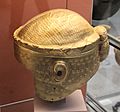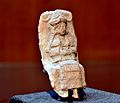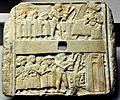Ur facts for kids
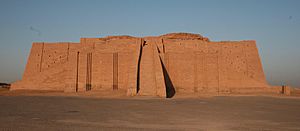
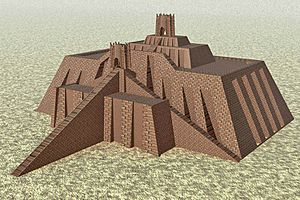
Ur was an ancient city, one of the very first in the world! It was part of the Sumerian civilization, built around 3,800 BC. We have old writings about Ur from around 2600 BC.
Ur was once a city by the sea, close to where the River Euphrates met the Persian Gulf. Today, it's far from the coast, south of the Euphrates River. It's about 16 kilometres (9.9 mi) from Nasiriyah, a city in Iraq.
The Great Ziggurat
In the Sumerian city of Ur, the Ziggurat was like a giant skyscraper. It stood about 20 metres (66 feet) tall! Today, only the bottom part of this huge building remains.
The Ziggurat had big staircases for people to go up and down. These stairs tell us a lot about the people who built them. The Sumerians didn't have modern tools or machines like we do. They were very careful brick builders.
They made perfect mud bricks. After the bricks dried, workers carried them to the site. They used a thick, sticky black substance called bitumen to hold the bricks together. Bitumen is like the asphalt used to pave roads today. They also braided reeds to make them strong, using them like steel cables.
Over time, the Ziggurat became more than just a place for gods. It had workshops where skilled craftworkers made things. There were also temples where priests performed worship.
People of Ur
The city of Ur had three main social classes, or groups of people.
- The richest people were at the top. This group included government officials, priests, and soldiers.
- The middle group included merchants (traders), teachers, workers, farmers, and craftmakers.
- At the bottom were slaves. These were often people captured in battles.
When people were buried in Ur, it showed their social standing. Kings and queens were buried with amazing treasures!
Because Ur had good irrigation (ways to water crops), farmers grew lots of food. This meant not everyone had to work on farms. People could learn other skills.
An old clay tablet found in Ur listed many special workers. There were chisel workers who made sculptures. Gem cutters made beautiful gems. Fullers stomped on woven wool to make it soft. Metal workers created weapons and tools.
Images for kids
-
Enthroned King Ur-Nammu (about 2047–2030 BC).
-
U.S. soldiers ascend the reconstructed Ziggurat of Ur in May 2010.
-
Wall plaque from Ur, 2500 BCE. British Museum.
See also
 In Spanish: Ur para niños
In Spanish: Ur para niños


